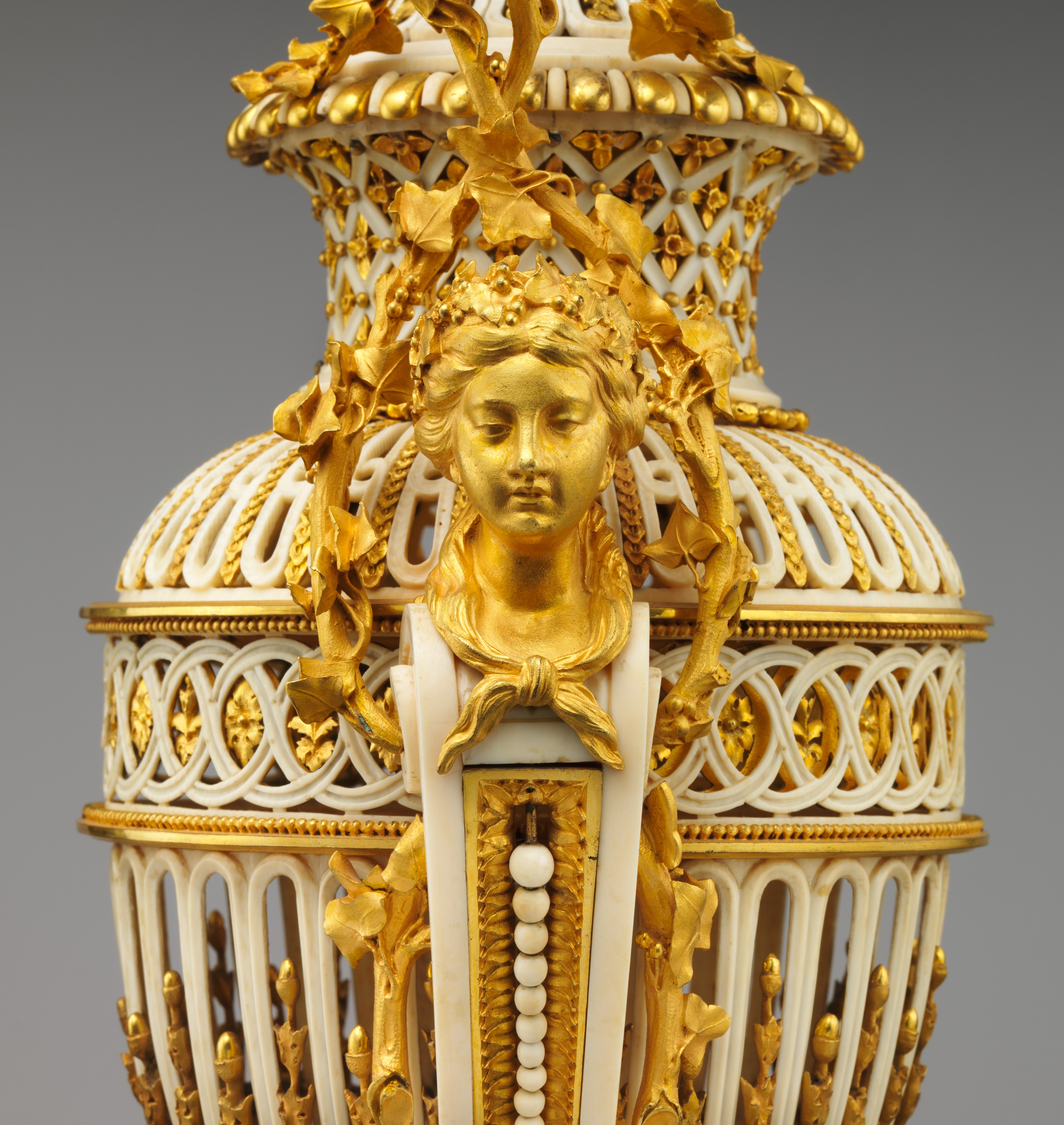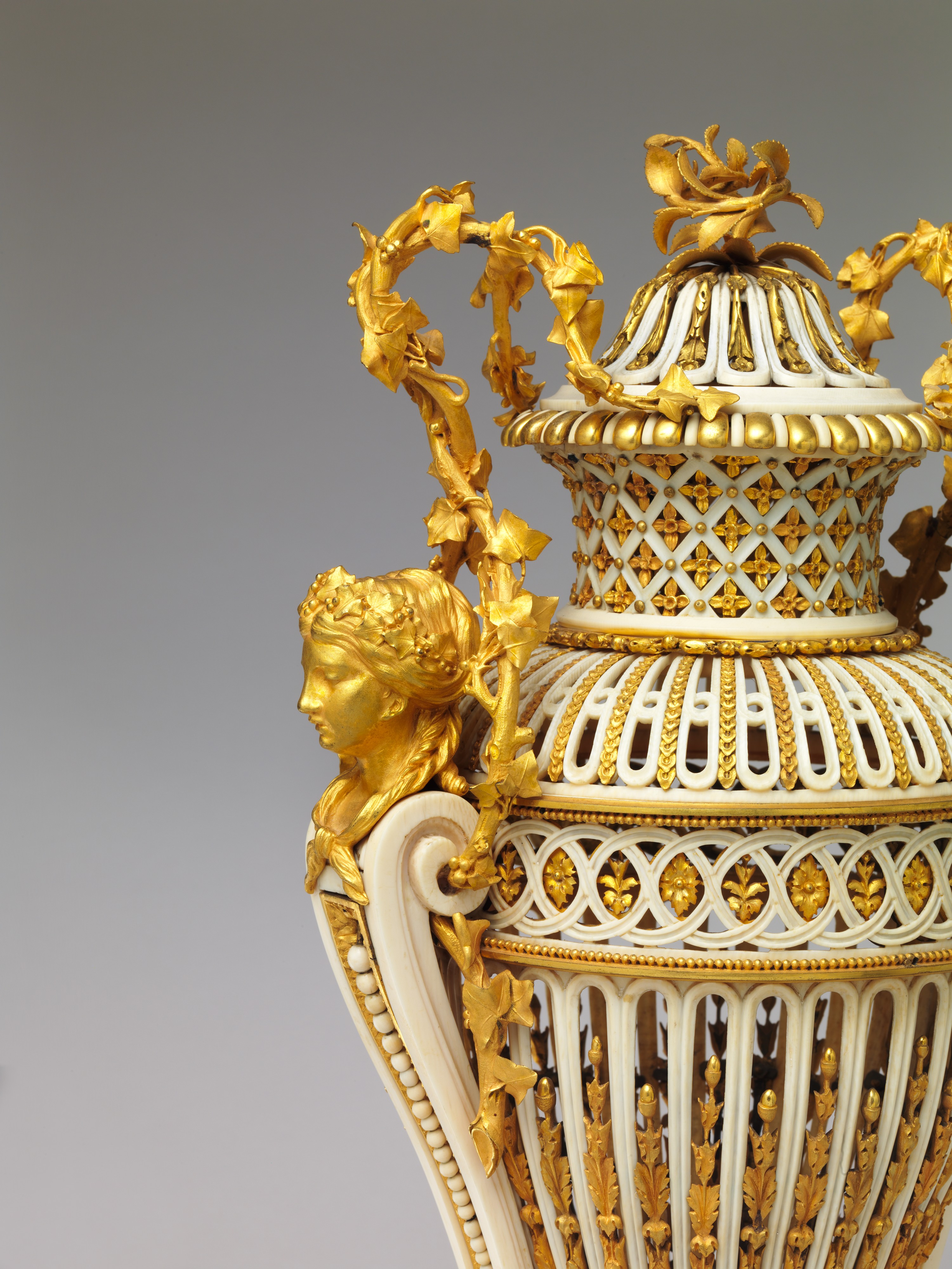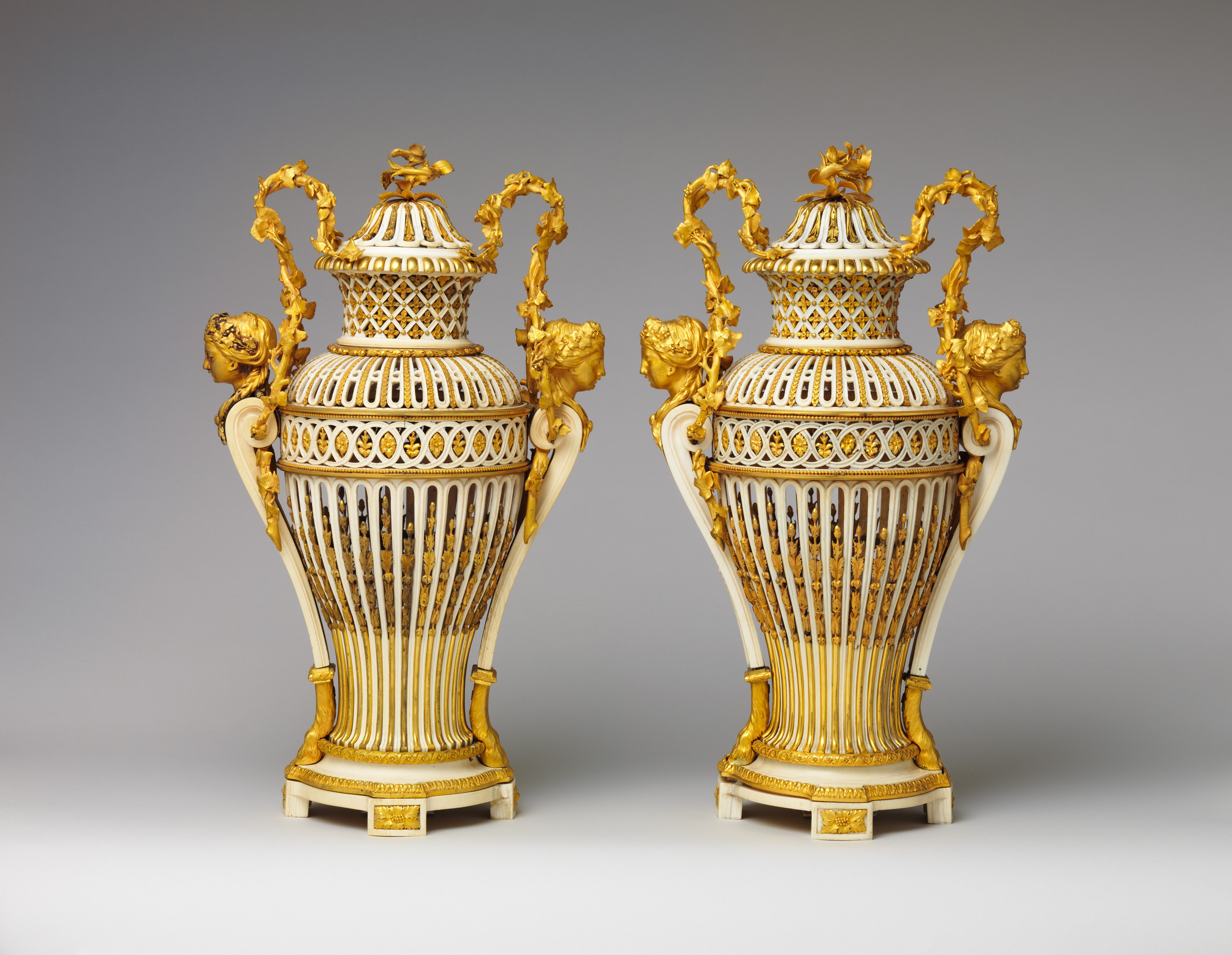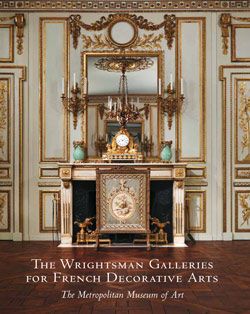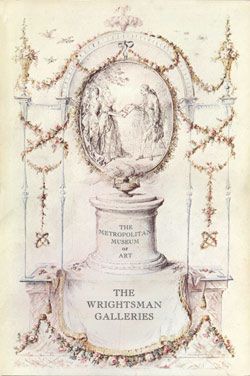Vase with cover (Vase en ivoire) (one of a pair)
Ivory-turning had been a fashionable pastime at European courts during the sixteenth and early seventeenth centuries, and it was revived in France and elsewhere during the second half of the eighteenth century. Louis XV worked the lathe himself, and his daughters received instruction in this art form. His grandson the dauphin, the future Louis XVI, also took lessons, as did his brothers. A group of ivory vases was recorded at the Château de Versailles on the eve of the Revolution, possibly created by members of the royal family. It is more likely, however, that Michel Voisin (1729–1786), turning master to Louis XVI, or his son François was responsible for these precious, lacelike objects. A series of engraved designs by the younger Voisin, entitled Nouveau Cahier de vases, composés par Voisin Fils, includes a vase that is similar to but more elaborate than the Museum’s pair. The chief difference is that the body and shoulder of the Museum’s covered vases are decorated with vertical openwork channels instead of spiraling ones. As suggested in the engraving, the Museum’s vessels are richly embellished with gilt-bronze mounts. Especially noteworthy are the beautifully modeled female busts and the scrolling handles shaped like interlaced branches of berried ivy.
Since the eighteenth-century provenance of the Museum’s pair remains a mystery, one can only wonder if they were part of the ivory collection at Versailles. Nine such vases were also documented in the Cabinet Intérieur of the king’s aunt Madame Victoire at the Château de Bellevue in 1786, displayed in individual glass cases. The presence of such protective cases suggests that these exotic openwork vessels were purely decorative and considered too delicate for use as potpourri holders.
Due to rights restrictions, this image cannot be enlarged, viewed at full screen, or downloaded.
This artwork is meant to be viewed from right to left. Scroll left to view more.


